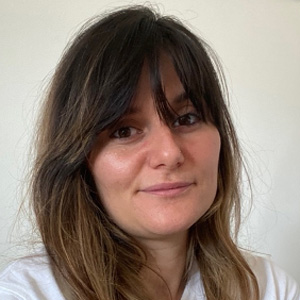BE4REHAB: Best Evidence for Rehabilitation, a WHO–Cochrane Rehabilitation Project
The World Health Organization (WHO) defines rehabilitation as ‘a set of interventions designed to optimize functioning and reduce disability in individuals with health conditions in interaction with their environment’. For research purposes, Cochrane Rehabilitation developed a more detailed definition of rehabilitation in a healthcare context: ‘A multimodal, person-centred, collaborative process including interventions targeting a person’s capacity (by addressing body structures, functions and activities/participation) and/or contextual factors related to performance with the goal of optimizing the functioning of persons with health conditions currently experiencing disability or likely to experience disability, or persons with disability.’
Rehabilitation is an important part of universal health coverage and represents a key strategy for ensuring healthy lives and wellbeing for all. The demand for rehabilitation services is increasing worldwide due to the rise in chronic diseases, ageing populations and improved healthcare access. To date, an estimated 2.4 billion people are currently living with a health condition that may benefit from rehabilitation. However, individuals with disabilities encounter numerous obstacles when attempting to access healthcare services.
Rehabilitation is often not prioritised in countries and continues to be under-resourced. For example, data on access to rehabilitation services is sparse; the WHO estimated the availability of ten clinical professionals per 1 million people in low- and middle-income countries (LMICs). In such countries, rehabilitation structures are also under-resourced, affecting the delivery and accessibility of highly efficacious interventions such as physiotherapy. Therefore, there is often a gap between the need for rehabilitation and the actual access to these services, especially in LMICs.
In 2017, the Rehabilitation 2030 call for action was launched by the WHO to upscale rehabilitation globally and guarantee access everywhere and for everyone. The WHO has supported more than 35 countries in various regions worldwide to enhance their healthcare systems and improve the delivery of rehabilitation services. The objective of the WHO is to develop resources that Ministries of Health can utilise to effectively plan and incorporate rehabilitation programs, with a particular focus on their applicability in LMICs. As part of this initiative, the WHO Rehabilitation Programme developed a Package of Interventions for Rehabilitation (PIR), that was launched in 2022. It provides information and resources to help countries strengthen their rehabilitation planning and implementation at national and subnational levels, for 20 health conditions.
By providing evidence-based interventions and estimating the associated costs, the PIR aims to support ministries of health in planning, budgeting and integrating rehabilitation services into all healthcare platforms. In this scenario, the WHO Rehabilitation Programme and Cochrane Rehabilitation collaborated to conduct the BE4REHAB: Best Evidence for Rehabilitation project, aiming to identify the best available evidence for rehabilitation interventions in individuals with certain health conditions.
Cochrane Rehabilitation supervised the extraction of the recommendations about rehabilitation interventions from existing clinical practice guidelines (CPGs). These findings were sent to WHO-selected multi-professional panels to inform the PIR. Cochrane Rehabilitation also used a ‘mapping synthesis’ methodology to collect the results from relevant Cochrane systematic reviews (CSRs) through a comprehensive and user-friendly interface to interpret the data. Cochrane Rehabilitation extracted information from 59 CPGs and analysed data from 220 reviews about 16 health conditions. Five papers have been produced on CPGs related to rehabilitation interventions with particular reference to individuals with (1) non-specific lower back pain with or without radiculopathy, (2) osteoarthritis, (3) fractures, both in children and adults, and (4) amputation. Finally, five overviews of CSRs have been published regarding cerebral palsy, rheumatoid arthritis, chronic obstructive pulmonary disease, spinal cord injury and traumatic brain injury.
Through this widespread work, Cochrane Rehabilitation aims to contribute to the implementation of evidence-based rehabilitation and guide future scientific research in this field. This work will identify gaps in terms of rehabilitation interventions and assessments to inform everyone, from consumers to stakeholders, about this important topic. It will also promote equitable clinical outcomes and services in diverse cultural and economic settings.
Take-Away Messages
- Rehabilitation is considered a key health strategy of the 21st century.
- The WHO Rehabilitation Programme has developed a ‘Package of Interventions for Rehabilitation’ to support ministries of health in implementing rehabilitation services in their health systems.
- Cochrane Rehabilitation, together with the WHO Rehabilitation Programme, promoted the BE4REHAB: Best Evidence for Rehabilitation project, to identify the best available evidence for rehabilitation interventions in individuals with selected disabling health conditions.
Disclaimer
The views expressed in this World EBHC Day Blog, as well as any errors or omissions, are the sole responsibility of the author and do not represent the views of the World EBHC Day Steering Committee, Official Partners or Sponsors; nor does it imply endorsement by the aforementioned parties.
